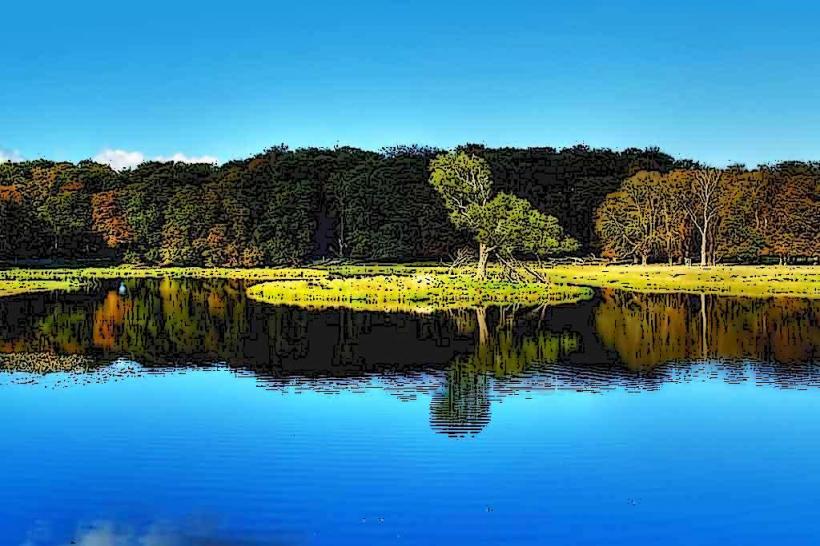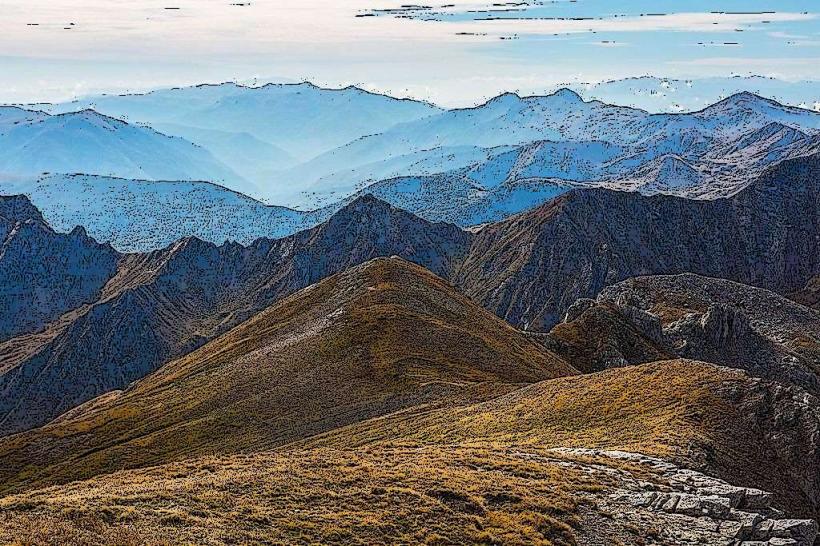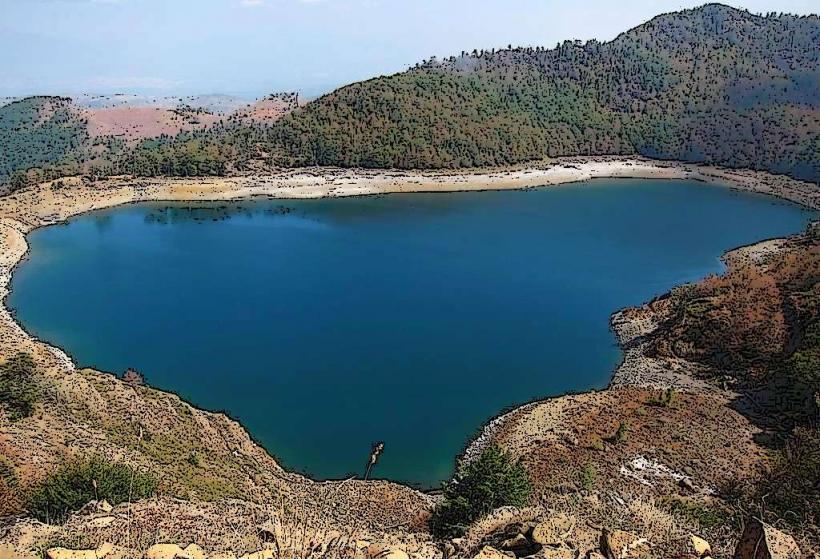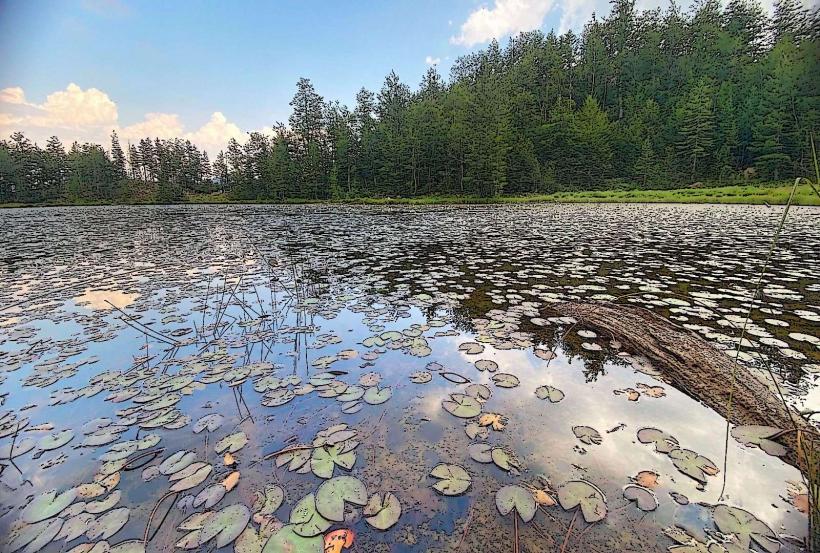Information
City: DiberCountry: Albania
Continent: Europe
Diber: Overview and Characteristics
Diber is a region and municipality located in the northeastern part of Albania, known for its scenic landscapes, traditional culture, and rich history. The area is characterized by mountains, rivers, and fertile plains, making it a significant agricultural and natural resource hub. Diber offers a more rural, tranquil atmosphere compared to some of Albania’s more tourist-heavy regions.
Geography and Climate
- Location:
- Diber is located in northeastern Albania, bordered by the Kosovo to the north and the Macedonian border to the east. The region is set in a mountainous area and is part of the larger district known as Diber County. The municipality includes both urban and rural areas, with its capital city being Peshkopi.
- The region is nestled between the Sharr and Bjeshkët e Nemuna mountain ranges, which contribute to its beautiful scenery and agricultural potential.
- Climate:
- The climate in Diber is continental with harsh winters and mild summers, making it more temperate compared to the Mediterranean coast of Albania. Winters can be quite cold, with snow common in the mountains, while summers are generally pleasant and moderate.
- The area experiences a good amount of rainfall, which supports its agriculture, particularly in its river valleys and plains.
History
- Ancient and Medieval Period:
- Diber's history dates back to ancient times, with evidence of early settlements in the region. It was once part of the Illyrian Kingdom and later became part of the Roman and Byzantine Empires.
- In the medieval period, Diber played a role as a strategic military and trade point, particularly in the Ottoman era, when it was incorporated into the empire as part of the Kosovo region.
- Ottoman Period:
- The Ottomans influenced the cultural and architectural development of Diber. During their rule, the region’s towns and villages grew, and many of the mosques and traditional Ottoman-era buildings can still be found in the region.
- Modern Era:
- Diber was part of Albania's efforts for independence in the early 20th century and witnessed many changes in the 20th century, particularly with the establishment of the communist regime and later its collapse.
- In recent decades, Diber has become more integrated into Albania’s national development, with increasing efforts to improve infrastructure and boost local tourism.
Demographics
- Population:
- The population of Diber is approximately 100,000 people, with the largest concentration in the city of Peshkopi, which is also the administrative center of the region.
- Ethnic Composition:
- The population is predominantly Albanian, with a mix of other ethnic groups, including Slavic Albanians and Turkish communities, particularly in more rural areas.
- Language:
- The official language is Albanian, and most of the population speaks it. There are also smaller communities where Slavic dialects are spoken.
- Religion:
- Diber is diverse in terms of religion, with both Muslim (predominantly Sunni) and Orthodox Christian populations. The region has a rich religious history, with churches and mosques dotting the landscape.
Economy
- Agriculture:
- Agriculture plays a major role in the economy of Diber, particularly in the fertile valleys. The region is known for growing a wide range of crops, including grains, vegetables, and fruits. Diber is also famous for its potatoes, a key crop in the region’s economy.
- Livestock farming, particularly sheep and goats, is also common, with the production of dairy products and meat.
- Forestry:
- The mountainous terrain and extensive forests in Diber make forestry an important economic activity. The area is rich in timber, which is harvested for both local use and commercial purposes.
- Mining:
- Diber is home to significant mineral resources, including iron ore and aluminum. Mining operations have historically been an important part of the region's economy, although they have diminished in recent years due to environmental concerns and declining production.
- Tourism:
- While Diber is not as well-known as some of Albania’s coastal destinations, the region’s natural beauty and historical significance make it an appealing destination for eco-tourism and cultural tourism.
- Attractions such as the Lake of Pogradec, the Sharr Mountains, and nearby cultural sites in Peshkopi and Kalimash have begun to attract more visitors.
Urban Landscape
- Peshkopi:
- Peshkopi is the capital and largest city of Diber. The city is situated near the base of the Sharr Mountains and serves as an administrative, economic, and cultural hub for the region. The city has traditional Albanian architecture, with a mix of Ottoman and modern influences.
- Peshkopi has seen a growing population and development in recent years, including improved infrastructure, schools, and health services.
- Smaller Towns and Villages:
- Diber is also home to several small towns and rural villages, many of which maintain traditional ways of life. These include Kalimash, Trun, and Lurë, which are known for their picturesque settings and agricultural practices.
Culture and Lifestyle
- Traditional Culture:
- Diber is a region rich in traditional Albanian culture, with folk music, dances, and festivals that celebrate the region’s history and way of life.
- The Dibra folk music is an important cultural element, characterized by its distinctive rhythms and the use of traditional instruments.
- The region has also retained many traditional crafts, including weaving, embroidery, and pottery.
- Cuisine:
- The cuisine of Diber is typical of Albanian rural regions, with an emphasis on locally grown produce, meats, and dairy products. Dishes such as byrek, tavë kosi, and fërgesë are common in the region, often made with fresh, local ingredients.
- Diber’s potato is highly regarded in Albania, and various local dishes highlight this key agricultural product.
- Lifestyle:
- The people of Diber are known for their hospitality and strong sense of community. The region’s lifestyle is slower-paced and more rural, with farming and herding still playing an essential role in daily life.
- While there has been urbanization in recent years, many aspects of rural life and customs are still maintained, especially in the surrounding villages.
Natural Attractions
- Sharr Mountains:
- The Sharr Mountains are a prominent feature of the Diber landscape, providing opportunities for hiking, mountaineering, and nature walks. The mountains are known for their diverse flora and fauna, including protected species.
- Lake Pogradec:
- Though technically part of the nearby Pogradec municipality, Lake Pogradec is close to Diber and offers opportunities for relaxation and water sports. The lake is known for its clear waters and surrounding natural beauty.
- Lurë National Park:
- The Lurë National Park, located to the east of Diber, is a popular destination for eco-tourism. It features beautiful lakes, rivers, and diverse wildlife, making it an ideal spot for hiking and nature exploration.
- Rivers and Springs:
- Diber is known for its numerous rivers and springs, including the Black Drin and White Drin rivers. These rivers provide the region with fertile soil for agriculture and are also ideal for fishing and other water activities.
Landmarks and Heritage Sites
- The Fortress of Peshkopi:
- A historical fortress located near the capital, Peshkopi, it offers panoramic views of the city and surrounding landscapes. It has been an important strategic location throughout history, and its ruins are a reminder of the region’s past.
- The Church of St. Mary:
- Located in Peshkopi, the Church of St. Mary is an important Orthodox Christian site in the region. It showcases local architectural styles and provides insight into the religious history of the area.
- The Mosque of Peshkopi:
- A mosque built during the Ottoman period, offering a glimpse into the region’s Islamic heritage.
- Kalimash Bridge:
- An ancient bridge spanning the Black Drin River near the town of Kalimash. The bridge, believed to date back to the Ottoman period, is an important historical and architectural landmark.
Infrastructure
- Transportation:
- Diber is well-connected by road to other parts of Albania, with Peshkopi serving as the central hub. The region has good access to major cities like Tirana and Shkoder.
- Public transportation consists of buses and minibuses, although many of the rural areas are only accessible by private vehicles.
- Urban Development:
- Diber has seen gradual urbanization in recent years, with improvements to infrastructure and public services. However, many of the rural areas still maintain their traditional character, with limited modernization in some villages.
Challenges
- Economic Development:
- Although Diber is rich in natural resources and agriculture, it faces challenges related to economic development and infrastructure. Many of the rural areas still struggle with poverty and lack access to modern services.
- Environmental Concerns:
- The region's heavy reliance on agriculture and mining has led to some environmental degradation. Efforts to balance economic development with environmental conservation are ongoing.
Conclusion
Diber is a historically rich and naturally beautiful region of Albania, offering a mix of rugged mountains, fertile plains, and traditional culture. While it may not be as heavily developed or tourist-oriented as other parts of the country, it remains an important area for agriculture, natural resources, and local history. The region’s unique landscapes, cultural heritage, and growing tourism potential make it an intriguing place to explore.






